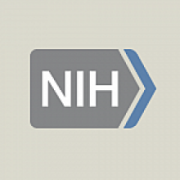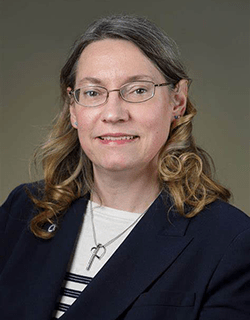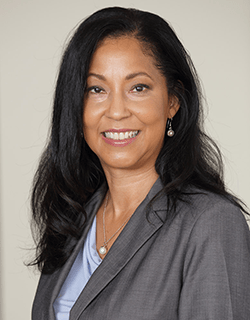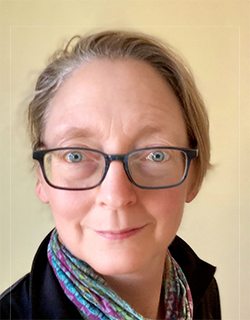Friday, March 31, 2023


Susan Gregurick, Ph.D.
ODSS

Janine Clatyon, M.D., FARVO
ORWH

Jennie Larkin, Ph.D.
NIA

Dorothy Beckett, Ph.D.
NIGMS
Women have made innumerable contributions and achievements across many decades of NIH research, innovation, and public service — more than we could possibly recognize during the month of March. However, in celebration of Women’s History Month, ODSS has highlighted a few of the many incredible women who have made an impact in the scientific community and have made this such a wonderful place for myself and my colleagues to work.
Despite the presence of many extraordinary women working in data science at NIH and elsewhere, women remain under-represented in STEM fields, and NIH has made a commitment to shrinking the gender gap in the biomedical sciences. In celebration of the women working at NIH, I spoke with three female leaders in data science — Dr. Jennie Larkin of the National Institute on Aging (NIA), Dr. Dorothy Beckett of the National Institute of General Medical Sciences (NIGMS), and Dr. Janine Clayton of the Office of Research on Women’s Health (ORWH).
Dr. Beckett, Director of the NIGMS Division of Biophysics, Biomedical Technology, and Computational Biosciences (BBCB), joined NIH a little over two years ago after about 30 years as a faculty member at the University of Maryland, College Park. In addition to teaching, Dr. Beckett directed a research program that focused on the basic biophysical chemistry of protein function and its significance for biological regulation. That work led her to take an interest in the NIH Protein Database (PDB), which she had previously used with her students.
“My job is managing people and managing information flow, and I spend a lot of time thinking about science,” Dr. Beckett said. “Why? Because I firmly believe in the three legs of biophysics: developing new powerful technologies to study biophysics and other biological sciences, the computational tools that go hand-in-hand with that technology, and the application of those novel tools to answer very interesting biological questions.”
Part of Dr. Beckett’s deep thinking about the sciences and managing the people within them involves the diversity of those whose names appear on research projects and funding opportunities.
“One of the tenants of our funding decisions is to make [projects we fund] as diverse as possible. In certain programs, women are at parity with men. In many, though, that is not true,” Dr. Beckett said. Though her authority overseeing extramural funding decisions allows her to prioritize funding for more diverse projects, she still finds that the majority of applicants for funding opportunities are often men.
Dr. Larkin, Deputy Director of the Division of Neuroscience at NIA, also uses her position to foster program development and create an atmosphere where people can be innovative and use technology to drive research forward.
“I love to work in cross-functional teams, and I love to foster really exciting new ideas and watch people grow,” Dr. Larkin said, emphasizing that she enjoys being able to mentor other women in the data science community and create teams where their ideas and expertise can flourish.
Much like I have found during my time at NIH, Dr. Larkin feels that the agency has been a nurturing place for data scientists to grow their careers for many years. At NIA especially, I’ve been impressed with the way that they’re thinking about integrating data and how they’ve been early adopters to some really interesting technologies and capabilities.
“There’s a great predominance of women data science leaders across NIH, and that is a special feature and capability that may make NIH distinct and unique,” Dr. Larkin told me. “[The number of women leaders] may help us understand why NIH has such a wonderful, collaborative and supportive environment.”
Although Dr. Clayton, Director of ORWH, said that she doesn’t consider herself a data scientist, she recognizes that data science is critical to the future of biomedical research.
“We prioritized [data science] at the ORWH as a topic of interest consistent with one of our goals of advancing women in STEM,” Dr. Clayton said. In May 2022, ORWH incorporated data science, engineering, and computing into a summit titled the “Reimagining Women in the Bioengineering, Technology, and Data Science Ecosystem: A Partnership-Building Initiative.” The successful meeting was organized by the Partnerships Committee of the NIH Working Group on Women in Biomedical Careers.
“While I’m proud of this work, I’m concerned that the number of women seeking undergraduate degrees in computer science is decreasing at a time when data science and related fields are taking off,” Dr. Clayton said. “It is vital that we encourage high school and college-aged girls and women to seek careers in data science. Mentoring is a critical bi-directional communication channel for us to ensure the future scientists reflect the amazing talent of our diverse young people of today.”
Looking towards the future of data science and AI, Dr. Clayton said that the field offers great opportunity for the integration of consideration of sex and gender, which she said has the “potential to inform and improve the health of women, and everyone.”
As we move towards gender equality in the world, and within our NIH data science community, it’s important to celebrate the achievements women have made while recognizing that we can always do better. I am proud to be a woman in data science and am glad that I’m able to share that title with other incredible women like Drs. Beckett, Larkin, and Clayton. Happy Women’s History Month!


